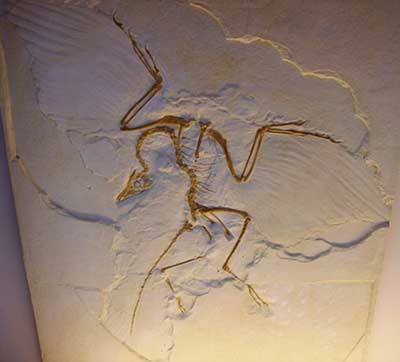

Birds are generally believed to have evolved from certain feathered theropod dinosaurs, and there is no real dividing line between birds and dinosaurs, except of course that some of the former survived the Cretaceous–Paleogene extinction event while the latter did not. For the purposes of this article, a 'bird' is considered to be any member of the clade Aves sensu lato. Some dinosaur groups which may or may not be true birds are listed below under 'Proto-birds'.
This page contains a listing of prehistoric bird taxa only known from completely fossilized specimens. These extinctions took place before the Late Quaternary and thus took place in the absence of significant human interference. While the earliest hominids had been eating birds and especially their eggs, human population and technology was simply insufficient to seriously affect healthy bird populations until the Upper Paleolithic Revolution. Rather, reasons for the extinctions listed here are stochastic abiotic events such as bolide impacts, climate change due to orbital shifts, mass volcanic eruptions etc.
Alternatively, species may have gone extinct due to evolutionary displacement by successor or competitor taxa - it is notable that an extremely large number of seabirds have gone extinct during the mid-Tertiary; this seems at least partly due to competition by the contemporary radiation of marine mammals.
The relationships of these taxa are often hard to determine, as many are known only from very fragmentary remains and due to the complete fossilization precluding analysis of information from DNA, RNA or protein sequencing. The taxa listed in this article should be classified with the Wikipedia conservation status category "Fossil".
Before the late 19th century, when minerals were still considered one of the kingdoms of binomial nomenclature, fossils were often treated according to a parallel taxonomy. Rather than assigning them to animal or plant genera, they were treated as mineral genera and given binomial names typically using Osteornis ("bone-bird") or Ornitholithus ("bird fossil") as "genus". The latter name, however, is still in use for an oogenus of fossil bird eggs. Also, other animals (in particular pterosaurs) were placed in these "genera". In sources pre-dating the Linnean system, the above terms are also seen in the more extensive descriptions used to name taxa back . Read more ...
Fossilized Flamingo Egg Up To 12,000 Years Old Is First Ever Found In The Americas IFL Science - August 4, 2023
Digging near a railway construction recently revealed an ancient charioteer – and now, next to a construction site for a new airport in Mexico, the second-ever report of a fossilized flamingo egg in the world has been made. This is also the first time a fossilized flamingo egg has been found anywhere in the Americas.
Extinct 'Lord of The Rings' eagles had a 10-foot wingspan and probably could have carried a hobbit Live Science - March 20, 2023
This Ancient Creature Is a Bizarre Hybrid of Dinosaur And Bird Science Alert - January 5, 2023
We can confidently say that birds are dinosaur descendants, though paleontologists are still puzzled as to how this incredible evolutionary event occurred. Now a complete fossilized skeleton of a bird that lived in what is today China around 120 million years ago might help clarify key steps in the transformation process, presenting with a more archaic, dinosaur-like head atop a body that has more in common with modern birds.
Fossilized fragments of a skeleton, hidden within a rock the size of a grapefruit, have helped upend one of the longest-standing assumptions about the origins of modern birds Science Daily - November 30, 2022
One of the key skull features that characterizes 99% of modern birds - a mobile beak - evolved before the mass extinction event that killed all large dinosaurs, 66 million years ago. This finding also suggests that the skulls of ostriches, emus and their relatives evolved 'backwards', reverting to a more primitive condition after modern birds arose.
Ancient bird that died 110-million-years-ago is found perfectly preserved with an egg inside its body Daily Mail - March 20, 2019
The 'first ever' bird fossil with an egg preserved inside the body has been discovered. Scientists say that the 'incredibly well preserved' find, dating back to the time of the dinosaurs, sheds new light on the reproduction of birds. The specimen, representing a new species called Avimaia schweitzerae, was discovered in 110-million-year-old deposits in north western China. The 'first ever' bird fossil with an egg preserved inside the body has been discovered. Scientists say that the 'incredibly well preserved' find, dating back to the time of the dinosaurs, sheds new light on the reproduction of birds. The specimen, representing a new species called Avimaia schweitzerae, was discovered in 110-million-year-old deposits in north western China. It belongs to a group called the Enantiornithes - 'opposite birds' - which were common all around the world during the Cretaceous Period and lived alongside the dinosaurs. It belongs to a group called the Enantiornithes - 'opposite birds' - which were common all around the world during the Cretaceous Period and lived alongside the dinosaurs.
48-Million-Year-Old Fossil Owl Is Almost Perfectly Preserved Live Science - October 23, 2018
About 48 million years ago, an owl swooped down to catch its prey, not by the light of the moon but in broad daylight. How do paleontologists know this fowl wasn't a night owl? They found the exquisitely preserved remains of an owl, and its skull shares a telltale characteristic with modern-day hawks, which also hunt by day, the researchers said. The finding is extraordinary, largely because it's rare to find fossilized owls, especially one that has so many preserved bones.
Elephant birds: Who killed the largest birds that ever lived? BBC - September 13, 2018
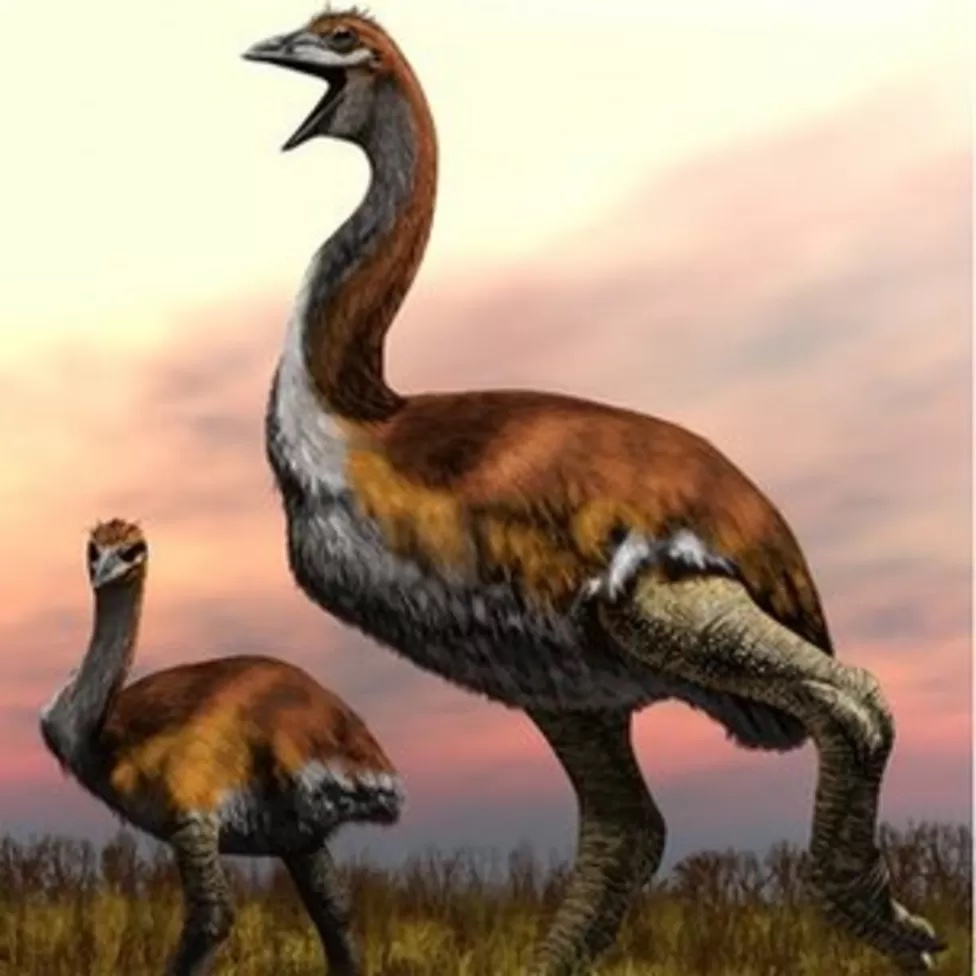
Prehistoric humans are under suspicion of wiping out the largest birds that ever lived after fossilized bones were discovered with telltale cut marks. According to scientists, it's evidence that the elephant birds of Madagascar were hunted and butchered for food. The remains have been dated to about 10,000 years ago. Until now, the first settlers were thought to have arrived on the island about 2,500 to 4,000 years ago.
Ancient bird bones redate human activity in Madagascar by 6,000 years PhysOrg - September 12, 2018
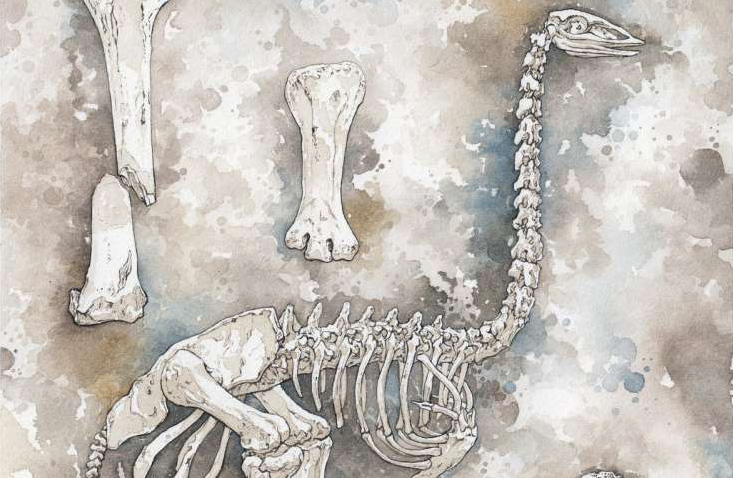
Analysis of bones, from what was once the world's largest bird, has revealed that humans arrived on the tropical island of Madagascar more than 6,000 years earlier than previously thought. A team of scientists led by international conservation charity Zoological Society of London discovered that ancient bones from the extinct Madagascan elephant birds (Aepyornis and Mullerornis) show cut marks and depression fractures consistent with hunting and butchery by prehistoric humans. Using radiocarbon dating techniques, the team were then able to determine when these giant birds had been killed, reassessing when humans first reached Madagascar.
Rare intermediate fossils give researchers insight into evolution of bird-like dinosaur Science Daily - August 23, 2018
An international team of researchers discovered a new species of dinosaur, Xiyunykus pengi, during an expedition to Xinjiang, China. The discovery is the latest stemming from a partnership between the George Washington University and the Chinese Academy of Sciences. The findings along with the description of a second new intermediate species, Bannykus wulatensis. Xiyunykus and Bannykus are both alvarezsaurs, an enigmatic group of dinosaurs that share many characteristics with birds. Their bodies are slender, with a bird-like skull and many small teeth instead of the usual large, sharp cutting teeth of their meat-eating relatives.
Scientists find the first bird beak, right under their noses Science Daily - May 3, 2018
Researchers have pieced together the three-dimensional skull of an iconic, toothed bird that represents a pivotal moment in the transition from dinosaurs to modern-day birds. Ichthyornis dispar holds a key position in the evolutionary trail that leads from dinosaurian species to today's avians. It lived nearly 100 million years ago in North America, looked something like a toothy seabird, and drew the attention of such famous naturalists as Yale's O.C. Marsh (who first named and described it) and Charles Darwin.
Bird 'Eyeball' Survived 120 Million Years Live Science - January 11, 2018
Scientists have discovered a surprisingly "visionary" detail about a dinosaur-age bird that had a tooth-filled beak: It could likely see in color.
An analysis of the 120-million-year-old bird revealed that the creature's eye tissues - more specially, its rods and cones - had fossilized in remarkable condition. (Whereas rods sense grey tones, cones detect colors.) "We discovered a fossilized bird eye with soft tissue for the first time in the world
Fossil sheds light on bird evolution after asteroid strike BBC - July 10, 2017
The fossil of a tiny bird that lived 62 million years ago confirms that birds evolved very rapidly after the asteroid strike that wiped out the dinosaurs. The sparrow-sized tree-dweller lived ''just a geological blink of an eye" after the mass extinction. Bird fossils from that time period are very rare. Analysis suggests the ancestors of most modern birds, from owls to woodpeckers, had taken to the wing within four million years of the asteroid strike. Like mammals, the birds that survived the extinction were able to expand and diversify to become one of the most successful animal groups on Earth. Analysis of the fossil and its relationship to other members of the bird family tree suggests as many as 10 major bird groups had appeared within four million years of the extinction.
The incredibly well-preserved 100 million-year-old baby bird that lived at the time of the dinosaurs: 'Simply stunning' Myanmar amber find reveals hatchling trapped in tree sap Daily Mail - June 8, 2017
Bird was a few days old when it fell into a pool of sap oozing from a conifer
The amazing find shows the head, neck, wing, tail and feet of now extinct bird
Had flight feathers and was growing tail feathers, but lacked body feathers
Was part of a group known as the 'opposite birds' that lived alongside the ancestors of modern birds but died out
Evidence found of ostriches in India 25,000 years ago PhysOrg - March 10, 2017
After finding partially fossilized avian eggshells during a dig, the researchers sought to learn if they were from an ancient ostrich relative. This is because the ostrich family tree is believed to have originated in Africa - for them to be living in India at some point suggested a path between Africa and India that does not exist today. By subjecting the shell fragments to DNA analysis, the team determined that they were, in fact, from an ancient African ostrich relative, which, the team notes, bolsters a theory that approximately 150 million years ago, there existed a supercontinent called Gondwanald, which broke up approximately 130 to 100 million years ago, its pieces becoming South America, Africa, Antarctica, Australia, Madagascar and Arabia. The theory explains how ostriches could have made their way to India and perhaps other faraway places. Prior to the breakup of Gondwanald, birds of the ostrich family were known as ratites (large flightless birds). After being separated, new long legged flightless bird types evolved, including emus in Australia and cassowaries in New Guinea. But if ostriches made their way to India prior to the breakup of the supercontinent, that suggests they could have been living there for over a 100 million years.
Parrot fossil unearthed in Siberia BBC - October 26, 2016
parrot fossil has been unearthed in Siberia - the furthest north one of these birds has ever been found, a study reports. A single parrot bone was discovered in the Baikal region and dates to between 16 and 18 million years ago. It suggests that the birds, which today mainly inhabit tropical and sub-tropical regions, may once have been widespread in Eurasia. It is also the first time a fossil parrot has been found in Asia.
Ancient eggshell protein breaks through the DNA time barrier PhysOrg - September 27, 2016
Scientists have identified fossil proteins in a 3.8 million year-old ostrich eggshell, suggesting that proteins could provide valuable new insights into the evolutionary tree, much further back in time than was previously thought. The study suggests that survival of protein fragments in the ancient eggshell could provide genetic information almost 50 times older than any DNA record. The findings shed new light on how animals and humans lived and interacted in the past, how some species became extinct, and why so 2 me evolved and continue to thrive today. Crucially, the research provides archaeologists with the ability to be more targeted in which fossils they submit for deeper analysis.
Ostrich relative lived in North America 50 million years ago PhysOrg - July 5, 2016
Exceedingly well-preserved bird fossil specimens dating 50 million years represent a new species that is a previously unknown relative of the modern-day ostrich. The bird fossils were found more than a decade ago, completely intact with bones, feathers, and soft tissues in a former lake bed in Wyoming. Nesbitt cannot hide a grin as he calls the fossil a once-in-a-lifetime discovery for paleontologists.
Ancient birds' wings preserved in amber BBC - June 28, 2016
Two wings from birds that lived alongside the dinosaurs have been found preserved in amber. The "spectacular" finds from Myanmar are from baby birds that got trapped in the sticky sap of a tropical forest 99 million years ago. Exquisite detail has been preserved in the feathers, including traces of colour in spots and stripes. The wings had sharp little claws, allowing the juvenile birds to clamber about in the trees. The tiny fossils, which are between two and three centimetres long, could shed further light on the evolution of birds from their dinosaur ancestors.
New Zealand contractors unearth giant bird bones BBC - March 18, 2016
Contractors at a site in southern New Zealand have made an unexpected find while digging a trench - dozens of bones belonging to a long-extinct species of giant bird. Workers spotted the bones during excavations in an area of South Canterbury which was once swamp land. They've been identified as belonging to a female South Island giant moa, an enormous flightless bird which roamed the area for millennia. One of the bones is thought to belong to a smaller male moa.
Giant Flightless Bird Once Roamed the Arctic Discovery - February 16, 2016
More than 50 million years ago, a giant flightless bird that weighed several hundred pounds lived in the Arctic. Based on a single toe bone first found in the 1970s, researchers from the Chinese Academy of Sciences in Beijing and the University of Colorado Boulder determined that the bird, named Gastornis, lived in the Arctic Circle on Ellesmere Island.
Giant flightless bird wandered the Arctic 50 million years ago Science Daily - February 12, 2016
New research confirms there really was a giant, flightless bird with a head the size of a horse's wandering about in the winter twilight of the high Arctic some 53 million years ago. The confirmation comes from a new study by researchers from the Chinese Academy of Sciences in Beijing and the University of Colorado Boulder that describes the first and only fossil evidence from the Arctic of a massive bird known as Gastornis. The evidence is a single fossil toe bone of the 6-foot tall, several-hundred-pound bird from Ellesmere Island above the Arctic Circle. The bone is nearly a dead ringer to fossil toe bones from the huge bird discovered in Wyoming and which date to roughly the same time.
Evolution of flight in birds Science Daily - July 18, 2016
The group's findings suggest that wings, even those with large or ornately colored feathers, could have initially served different purposes rather than flying such as signaling or sexual selection before the development of flight.
Feathery fossils peg early birds to even earlier date BBC - May 6, 2015
Scientists in China have described a new species of early bird, from two fossils with intact plumage dating to 130 million years ago. Based on the age of the surrounding rocks, this is the earliest known member of the clade that produced today's birds: Ornithuromorpha. It pushes back the branching-out of this evolutionary group by at least five million years. The little bird appears to have been a wader, capable of nimble flight.
'Terror birds' had deep voices, fossil suggests BBC - April 10, 2015
A 90%-complete "terror bird" skeleton found on an Argentinean beach suggests these big-beaked predators had good low-frequency hearing and deep voices. t is the most complete skeleton ever discovered for one of these menacing beasts, and represents a new species.
Birdlike fossil challenges notion that birds evolved from ground-dwelling dinosaurs Science Daily - July 10, 2014
The re-examination of a sparrow-sized fossil from China challenges the commonly held belief that birds evolved from ground-dwelling theropod dinosaurs that gained the ability to fly. The birdlike fossil is actually not a dinosaur, as previously thought, but much rather the remains of a tiny tree-climbing animal that could glide.
Fossil of 'largest flying bird' identified BBC - July 7, 2014
The fossilized remains of the largest flying bird ever found have been identified by scientists. This creature would have looked like a seagull on steroids - its wingspan was between 6.1 and 7.4m (20-24ft). The 25m-year-old fossil was unearthed 30 years ago in South Carolina, but it has taken until now to identify that this is a new species.
Earliest Evidence of Flower Pollination by Birds Unearthed Live Science - May 28, 2014
Birds have been visiting and pollinating flowers for at least 47 million years, fossil evidence now suggests. The new find pushes back the onset of ornithophily, or bird pollination, by about 17 million years, researchers say. To pollinate, most species of angiosperms (flowering plants) require assistance from animals, particularly insects and birds. Though research suggests that insects have been pollinating flowers since the early Cretaceous period, over 100 million years ago, the onset of ornithophily has long remained elusive. Previously, fossils of modern-type hummingbirds suggested ornithophily began as early as 30 million years ago, but this conclusion was only inferred indirectly from the birds' long beaks and presumed hovering capabilities. However, researchers have now analyzed a well-preserved, 47-million-year-old fossil of the extinct bird Pumiliornis tessellatus, and found that the animal's stomach contents contain numerous angiosperm pollen grains. The discovery is the first direct fossil evidence of flower visitation by birds, and suggests that ornithophily is far older than previously believed.
DNA evidence suggests humans hunted moa to extinction PhysOrg - March 18, 2014
A new study conducted by an international team of researchers points to humans as the cause of the sudden extinction of all species of moa in New Zealand approximately 600 years ago. In their paper published in Proceedings of the National Academy of Sciences, the team describes DNA testing they carried out, along with archeological evidence, which they claim, proves that humans were the cause of the demise of the large flightless birds.
Oldest-Known Fossil Bird Tracks from Australia Science Daily - October 29, 2013
Two fossilized footprints found at Dinosaur Cove in Victoria, Australia, were likely made by birds during the Early Cretaceous, making them the oldest known bird tracks in Australia. Much of the rocky coastal strata of Dinosaur Cove in southern Victoria were formed in river valleys in a polar climate during the Early Cretaceous. A great rift valley formed as the ancient supercontinent Gondwana broke up and Australia separated from Antarctica.
How Birds Got Their Wings: Fossil Data Show Scaling of Limbs Altered as Birds Originated from Dinosaurs PhysOrg - September 17, 2013
Birds originated from a group of small, meat-eating theropod dinosaurs called maniraptorans sometime around 150 million years ago. Recent findings from around the world show that many maniraptorans were very bird-like, with feathers, hollow bones, small body sizes and high metabolic rates.
Prehistoric Flamingo Nest with Eggs Discovered Discovery - October 19, 2012
A fossil bird's nest has been discovered in Spain, cradling at least five eggs that scientists believe belonged to an ancient flamingo some 18 million years ago. The nest was found in a limestone block in the Ebro Basin in northeastern Spain. The researchers think it was abandoned and sunk to the bottom of a shallow, salty lake (which once also housed snakes, turtles and crocodiles) before being covered in mud and fossilizing during the early Miocene.
Reign of the giant insects ended with the evolution of birds, study finds PhysOrg - June 4, 2012
Giant insects ruled the prehistoric skies during periods when Earth's atmosphere was rich in oxygen. Then came the birds. After the evolution of birds about 150 million years ago, insects got smaller despite rising oxygen levels, according to a new study by scientists at the University of California, Santa Cruz. Insects reached their biggest sizes about 300 million years ago during the late Carboniferous and early Permian periods. This was the reign of the predatory griffinflies, giant dragonfly-like insects with wingspans of up to 28 inches (70 centimeters). The leading theory attributes their large size to high oxygen concentrations in the atmosphere (over 30 percent, compared to 21 percent today), which allowed giant insects to get enough oxygen through the tiny breathing tubes that insects use instead of lungs.
Paleobirding: What Birds Looked Like 125 Million Years Ago Wired - April 10, 2012
Looking at ancient bird fossils is an opportunity to see what birding might have been like millions of years ago. Back then, many birds had enormous teeth, long snouts and long, bony tails. "The birds that lived during the age of the dinosaurs were very different from the birds that live today," said Los Angeles County Natural History Museum curator and dino-bird expert Luis Chiappe. "And it would have been a completely different experience to go out birding in the Mesozoic Era." During the Mesozoic, from 250 to 65 million years ago, the planet also looked and felt very different. Earth was much warmer, and the ice caps didn't exist. The continents were only beginning to split into their modern configurations. Sea levels were higher, and large dinosaurs ruled the land. Primitive birds emerged at this time and became prey for non-avian dinosaurs, which were usually much bigger.
Archaeopteryx was first bird after all PhysOrg - October 26, 2011
The crown of the famous 150-million-year-old Archaeopteryx fossil as the first bird has been restored by a new evolutionary tree. Archaeopteryx had been considered for 150 years to be the first known bird since the first complete specimen was found in Germany in 1861, revealing a combination of reptilian and and bird features. But Chinese researchers asserted recently that a new and closely related fossil, Xiaotingia zhengi, was a bird-like dinosaur - therefore suggesting that Archaeopteryx was also a dinosaur.
Bird fossils reveal life's colorful chemistry BBC - June 30, 2011
The pigments preserved in fossils, including a 120 million-year-old bird, have been revealed using X-rays. A team, led by scientists from the University of Manchester, UK, scanned the beautifully preserved fossils. Their study, published in the journal Science, revealed the chemical fingerprint of pigments that once tinted the ancient bird's feathers. Manchester paleontologist Phil Manning described the discovery as an insight into "the chemistry of life itself". As well as the color patterns of ancient creatures, pigments reveal fundamental clues about the chemical reactions that took place in their bodies, and the food the creatures ate that fueled those reactions.
Ancient Jamaican bird used wings to go clubbing BBC - January 5, 2011
An extinct flightless bird from Jamaica fought rivals and predators using wings evolved into clubs, scientists suggest. The boney bludgeons carried by Xenicibis xympithecus are unlike anything else known in the bird world - or in mammals, reptiles or amphibians.
DNA of extinct birds extracted from ancient eggshell BBC - March 10, 2010
Researchers have found that eggshells of extinct bird species are a rich source of preserved DNA. An international team isolated the delicate DNA molecules of species including the massive "elephant birds" of the genus Aepyorni. The Proceedings of the Royal Society B research demonstrated the approach also on emu, ducks and the extinct moa.
Earliest toothless bird found PhysOrg - December 10, 2009
A new species of bird from the Cretaceous period in China has been identified. It had toothless upper and lower jaws, and provides significant information on the diversification in the evolution of birds during the Early Cretaceous. The new bird was around the size of a pigeon, and had a number of other unusual features, including having a humerus with a wide deltopectoral crest. It probably fed on fish (since the fossil was found in a lake bed), catching its prey on the wing. The shape of its feet suggests it may have rested, and possibly also nested, in trees.
New flying reptile fossils found BBC - October 14, 2009
Researchers in China and the UK say they have discovered the fossils of a new type of flying reptile that lived more than 160 million years ago. The find is named Darwinopterus, after Charles Darwin. Experts say it provides the first clear evidence of a controversial idea called modular evolution. The 20 new fossils found in north-east China show similarities to both primitive and more advanced pterosaurs, or flying reptiles. Until now, scientists had known about two distinct groups of these creatures - primitive, long-tailed pterosaurs and more advanced short-tailed ones, separated by a gap in the fossil record. But the discovery of more than 20 new fossil skeletons in north-east China sits in the gap in this evolutionary chain.
Four-Winged Fossil Bridges Bird-Dinosaur Gap Wired - September 25, 2009
A newly described, profusely feathered dinosaur may give lift to scientists’ understanding of bird and flight evolution, researchers report. The lithe creature, which stood about 28 centimeters tall at the hip, is the oldest known to have sported feathers and is estimated to be between 1 million and 11 million years older than Archaeopteryx, the first known bird.
Iridescence found in 40-million-year-old fossil bird feather PhysOrg - August 26, 2009
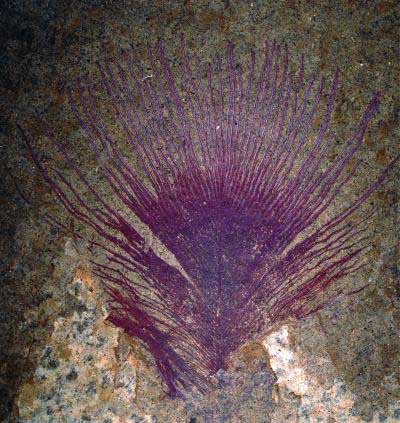
Scientists discovered that nanostructures found in this 40-million-year-old fossil were responsible for producing iridescent colors in the living feather. Known for their wide variety of vibrant plumage, birds have evolved various chemical and physical mechanisms to produce these beautiful colors over millions of years. A team of paleontologists and ornithologists led by Yale University has now discovered evidence of vivid iridescent colors in feather fossils more than 40 million years old.
Ancient Bird's Feathers Had Iridescent Glow Live Science - August 26, 2009
Nanostructures preserved in feather fossils more than 40 million years old show evidence that those feathers were once vivid and iridescent in color, paleontologists say. Iridescence is the quality of changing color depending on the angle of observation - it's what makes you see a rainbow in an oil slick. Many insects, such as butterflies, display iridescent colors on their wings, as do many modern birds on their feathers.
Fossil feathers reveal their hues BBC - July 9, 2008
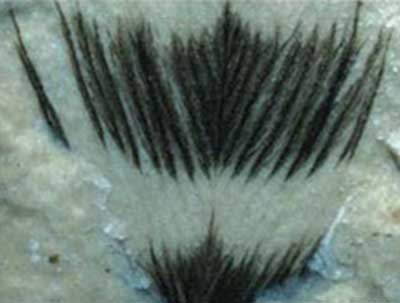
The complex colored plumage of extinct birds which once soared over the heads of dinosaurs could soon be revealed. Scientists have shown they are able to interpret the colour patterns seen in 100-million-year-old fossil feathers. Writing in the journal Biology Letters, US researchers reveal how ancient feathers found in Brazil displayed "striking" bands of black and white. Previously, fossil experts could only guess at the range of hues exhibited by ancient birds and some dinosaurs.
Ancient American bird was glider BBC - July 3, 2007
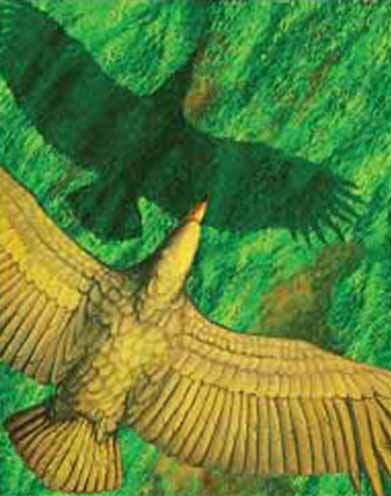
The largest bird known to have taken to the skies would have been a remarkable glider, scientists say. A North American team has studied the flight abilities of Argentavis magnificens, which lived six million years ago in Argentina. With its seven-metre (23ft) wingspan, the animal must have been an expert at riding thermals and updrafts. But, the team tells PNAS journal, at 70kg (155lbs) it might have struggled to get airborne by flapping its wings
Flying reptiles just got bigger BBC - September 9, 2005
Scientists are only now starting to recognize the astonishing size reached by pterosaurs, the flying reptiles that lived at the time of the dinosaurs. New discoveries in the Americas suggest some had wingspans of 18m (60ft). But there was nothing ugly about the way they moved through the air, according to expert Dr David Martill, of the University of Portsmouth. Their ability to utilize air currents, thermals and ground effects would astonish airplane designers.
Relatives Of Living Ducks And Chickens Existed Alongside Dinosaurs More Than 65 Million Years Ago Science Daily - January 2005
Newly published North Carolina State University research into the evolution of birds shows the first definitive fossil proof linking close relatives of living birds to a time when dinosaurs roamed the earth. Research by paleontologist Dr. Julia A. Clarke, an assistant professor in the marine, earth and atmospheric sciences department at NC State, and colleagues provides unprecedented fossil proof that some close cousins to living bird species coexisted with dinosaurs more than 65 million years ago. Information from a new avian species called Vegavis iaai indicates that these birds lived in the Cretaceous period and must have survived the Cretaceous/Tertiary (K/T) mass extinction event that included the disappearance of all other dinosaurs.
Oldest hummingbird fossils found BBC - May 6, 2004
A pair of 30 million-year-old fossils from southern Germany are the oldest fossil hummingbirds, a researcher says. The location of the finds is unexpected, because today the birds are only known from the Americas. The extinct hummingbirds may have influenced the shape of some modern Asian and African flowers. Other fossil hummingbirds have been found in Central America, Europe and Asia, but they are either very different from modern ones or are known from just a few bones. The new fossils, which have been assigned to the species Eurotrochilus inexpectatus, were endowed with long, nectar-sucking beaks and wings designed for feeding while hovering.
Feathered embryo found in China BBC - October 21, 2004
A 121-million-year-old baby arboreal bird, fossilized while still curled in its egg, has been found in China, Science magazine reports this week. The fossil is thought to be the most ancient unborn bird ever discovered. It has piqued researchers' interest because it had feathers, whereas many modern flying birds are naked and helpless when they first hatch. The authors say this supports the view that birds developed the strategy of hatching featherless later in history. This fossil is interesting because its preservation is so exceptionally fine, that even the soft tissues like feathers have been preserved. For an embryo that is still inside the egg, it is surprising how advanced the feathers were.

Birds